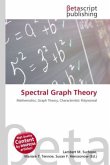High Quality Content by WIKIPEDIA articles! In the mathematical field of graph theory, the Shrikhande graph is a named graph discovered by S. S. Shrikhande in 1959. It is a strongly regular graph with 16 vertices and 48 edges, with each vertex having a degree of 6. In the Shrikhande graph, any two vertices I and J have two distinct neighbors in common (excluding the two vertices I and J themselves), which holds true whether or not I is adjacent to J. In other words, its parameters for being strongly regular are: {16,6,2,2}, with = = 2, this equality implying that the graph is associated with a symmetric BIBD. It shares these parameters with a different graph, the 4×4 rook's graph. The Shrikhande graph is locally hexagonal; that is, the neighbors of each vertex form a cycle of six vertices. As with any locally cyclic graph, the Shrikhande graph is the 1-skeleton of a Whitney triangulation of some surface; in the case of the Shrikhande graph, this surface is a torus in which each vertex is surrounded by six triangles. Thus, the Shrikhande graph is a toroidal graph. The dual of this embedding is the Dyck graph, a cubic symmetric graph.
Bitte wählen Sie Ihr Anliegen aus.
Rechnungen
Retourenschein anfordern
Bestellstatus
Storno








